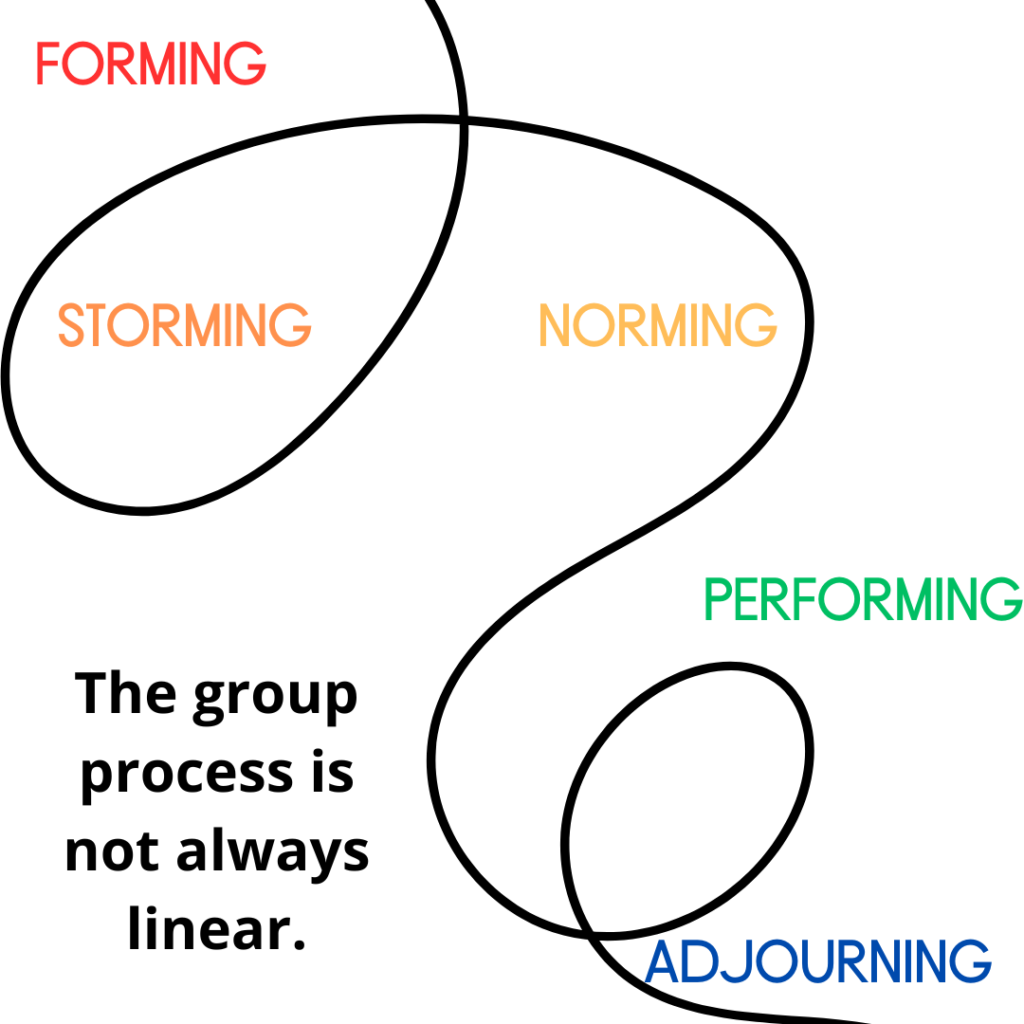Understanding the group process can help you create a positive and collaborative classroom environment where students feel supported and empowered to work together towards their goals. The group process is a series of stages that a group goes through as it develops and functions. These stages include forming, storming, norming, performing, culmination, and adjourning.
To help students navigate the group process, you can make communication ground rules, encourage active listening and respectful communication, and provide opportunities for reflection and feedback. You can also recognize and celebrate the contributions of all students and help them see the value in working together towards a common goal.
At the end of the school year, it’s helpful to plan for the culmination and adjourning stages of the group process. During the culmination stage, students have likely achieved academic goals that they are proud. Deliberate closure and celebration can help to ensure that students feel a sense of fulfillment and culmination as they transition to the next phase of their journey.
During the adjourning stage, students are preparing to move on to new projects, new classes, or possibly even new schools. This can be a difficult time for some students as they say goodbye to their classmates and teachers. Closing activities can help students feel a sense of fulfillment as the year comes to an end.
It’s important to note that the group process is not always linear, and some groups may experience setbacks or regressions as they work towards their goals. Additionally, not all groups will go through all six stages of the group process. For example, some groups may be short-lived and only go through the forming and performing stages. Other groups may not have a clear goal or task and may remain in the forming stage for an extended period of time.

Understanding group process across the various stages can help you to create a positive and collaborative classroom environment where students feel empowered to work together and achieve their goals. By planning for the culmination and adjourning activities at the end of the school year, you can ensure that your students feel a sense of closure and celebration as they move along their educational pathway.
Here are some activities that might be helpful:
Closing Activities
Appreciation Circle – In this activity, form a circle and take turns expressing something you all appreciate about each other. This can be a powerful way to build positive relationships and celebrate each other’s strengths. Passing a small token (melted marble, charm, pencil) to each student is a great way to memorialize this activity.
Vision Board – Create a collage to represent future aspirations. This can include personal, academic, and career goals, and can serve as a visual reminder of their dreams and aspirations. Instead of a scrapbook, this activity is future facing!
Gratitude Journal – Reflect on the things you all are grateful for and write them down in a journal. This can help foster a sense of gratitude. This activity is especially powerful if you have cultivated a reflective practice all year.
Letter to Future Self – Students can write or draw a note to their future selves, reflecting on what they have learned and accomplished, and set goals for the future. Seal and save the letters to be opened at a later date. This is my favorite middle school closing activity!
Memory Jar – Students can draw or write down their favorite memories from the school year on small pieces of paper and place them in a jar. This can serve as a visual reminder of the positive experiences they had and the friendships they formed. This activity is awesome for a class who might be staying together to revisit at the opening of the next school year.
Adjournment Activities:
Time Capsule – Students can create a time capsule to be opened at a later date. This can include items that represent their time together as a group, such as photos, letters, and mementos.Unlike a letter to self, this activity offers students the opportunity to collaborate.
Thank You Cards – Students can write thank you cards to their classmates and teachers, expressing their appreciation for the positive experiences they had together. This activity is more accessible for the more introverted students.
Farewell Video – Students can create a video that highlights their favorite memories from the school year and includes messages of appreciation and farewell. For next Capture a weekly photo in the classroom and compile them into an end of the year slideshow or video for students transitioning to a new building or program.

Pingback: Transitions can be hard. How to make them easier. – Count ME In!